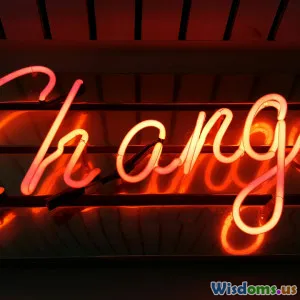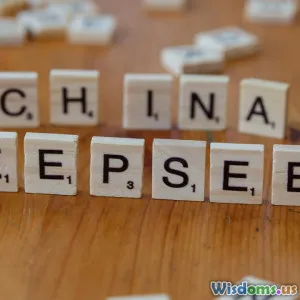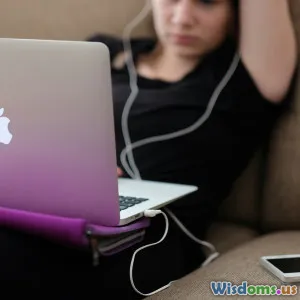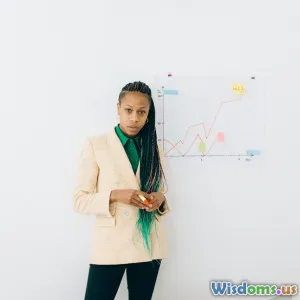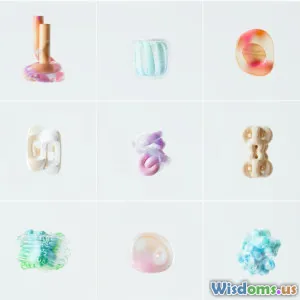
How Generative AI Is Transforming Artistic Creativity in 2024
8 min read Discover how generative AI revolutionizes artistic creativity in 2024, blending technology and imagination like never before. (0 Reviews)
How Generative AI Is Transforming Artistic Creativity in 2024
In 2024, the boundaries between technology and art have become remarkably fluid, thanks largely to advances in generative artificial intelligence (AI). Once a concept relegated to the world of science fiction or niche experimentation, generative AI now occupies center stage in redefining what it means to create art. From audiences encountering mind-bending digital artworks to musicians composing symphonies with AI co-pilots, the creative landscape is undergoing a profound transformation.
Introduction: The Dawn of a New Artistic Era
Imagine walking into a gallery where the paintings evolve in real-time, or listening to a soundtrack composed collaboratively by a human and an AI. This vision is no longer futuristic fantasy; generative AI technologies are actively redefining creative workflows across disciplines. By 2024, these systems have become not just tools but creative partners, enabling artists to push the boundaries of imagination and productivity.
Understanding Generative AI: Behind the Magic
Generative AI refers to machine learning models designed to create new content—artwork, text, music, or even 3D designs—based on patterns gleaned from vast datasets. Popular technologies in this domain include Generative Adversarial Networks (GANs) and large language or multimodal models like OpenAI's GPT-series or DALL·E 3.
Unlike earlier AI applications, which largely automated repetitive or analytical tasks, generative AI outputs novel, often unexpected creations. This capability opens an expansive realm of exploration in artistic expression.
Transforming Artistic Creativity: Key Domains and Examples
Visual Arts: Bridging Human Vision with Algorithmic Innovation
Artists now routinely use AI tools to generate complex visual art ranging from hyperrealistic portraits to abstract installations. For example, the famed AI artist Robbie Barrat has utilized GANs to reimagine classical aesthetics with surreal twists, producing works that challenge traditional definitions of originality.
In 2024, augmented reality exhibitions leverage AI-generated evolving visuals that respond to viewers’ emotions through biometric feedback – an intersection that was previously untenable.
Music and Sound Design: Composing the Future
Generative AI models are reshaping music creation by analyzing and synthesizing styles of legendary composers and contemporary genres. A notable example is Google's Magenta project, which created OSTs blending AI and human input, enriching industries from gaming to film.
Modern AI platforms enable composers to experiment with chord progressions, melodies, and even instrument timbres, fostering co-creation where AI suggests novel ideas and humans refine them. Bill Gates recently emphasized the significance: "AI will empower composers to break creative blocks and explore unimaginable musical spaces."
Creative Writing: Narratives Written with AI Co-Authors
Beyond visuals and sound, AI dramatically impacts storytelling. Writers use AI not only for inspiration but for generating plot outlines, character dialogues, or stylistic modifications. Tools like GPT-4 turbo, in 2024, have become indispensable in crafting novels, scripts, and poetry, where human creativity directs while AI enhances narrative depth.
For example, the novel "The Infinite Page" integrated AI-generated sections, sparking debate on authorship and creativity ethics.
Fashion and Design: Innovation at Speed and Scale
Fashion designers harness generative AI for creating novel textile patterns, virtual fitting models, and style forecasting based on consumer data trends. Brands like Gucci employ AI-driven generative art for capsule collections, revolutionizing apparel aesthetics.
Moreover, AI's speed accelerates prototyping, enabling designers to generate hundreds of design variants rapidly, expanding creative choice pools.
Expanding Creative Access and Democratization
One of generative AI’s most impactful effects is how it democratizes art creation. Previously, sophisticated tools required specialized skills; now, intuitive AI platforms permit beginners to produce compelling works with minimal training.
Platforms like RunwayML and Canva’s AI-powered design assistant empower educators, hobbyists, and small businesses to access high-caliber creative outputs. This shift is broadening participation and diversifying who can tell stories or produce art.
Challenges and Ethical Considerations
While generative AI empowers creativity, it also raises legitimate concerns:
- Authenticity and Ownership: When AI generates art, who owns it? Copyright laws struggle to adapt, igniting debates.
- Job Displacement Fears: Artists fear automation reducing opportunities, although many experts emphasize AI as augmentation rather than replacement.
- Bias and Representation: AI models may inherit dataset biases, potentially skewing representation in generated content.
Leading creatives advocate transparency and ethical frameworks. As artist Sougwen Chung puts it, "AI is a brush—not the painter. The human touch remains essential."
The Road Ahead: Toward Synergistic Creativity
Looking forward, 2024 sets the stage for increasingly sophisticated human-AI collaborations. Emerging trends include:
- Personalized Art Experiences: AI tailoring artistic outputs precisely to individual tastes and contexts.
- Multimodal Creativity: Integrating text, visuals, and sound in unified AI-generated experiences.
- AI as Curator: Intelligent systems assisting in revealing new patterns or narratives within artistic domains.
Evidence of these trends is visible in museums adopting AI-curated exhibitions and startups developing AI-driven creative tools designed to foster rather than replace human input.
Conclusion: An Invitation to Reimagine Creativity
Generative AI in 2024 represents both a formidable challenge and an exhilarating opportunity for artistic creativity. It invites artists, technologists, and audiences to reexamine notions of authorship, originality, and creative expression. By embracing AI as a collaborator, creatives can unlock unprecedented latent potential across mediums.
As the celebrated AI researcher Fei-Fei Li optimistically notes, "The fusion of human meaning and machine possibility promises art that transcends tradition—redefining creativity for the 21st century."
In this dynamic interplay of human imagination and algorithmic power, the future of art is not merely created; it is co-created, personalized, and limitless.
Prepare to view creativity through an altogether new lens—one where your next muse might just be artificial intelligence.
Rate the Post
User Reviews
Popular Posts












